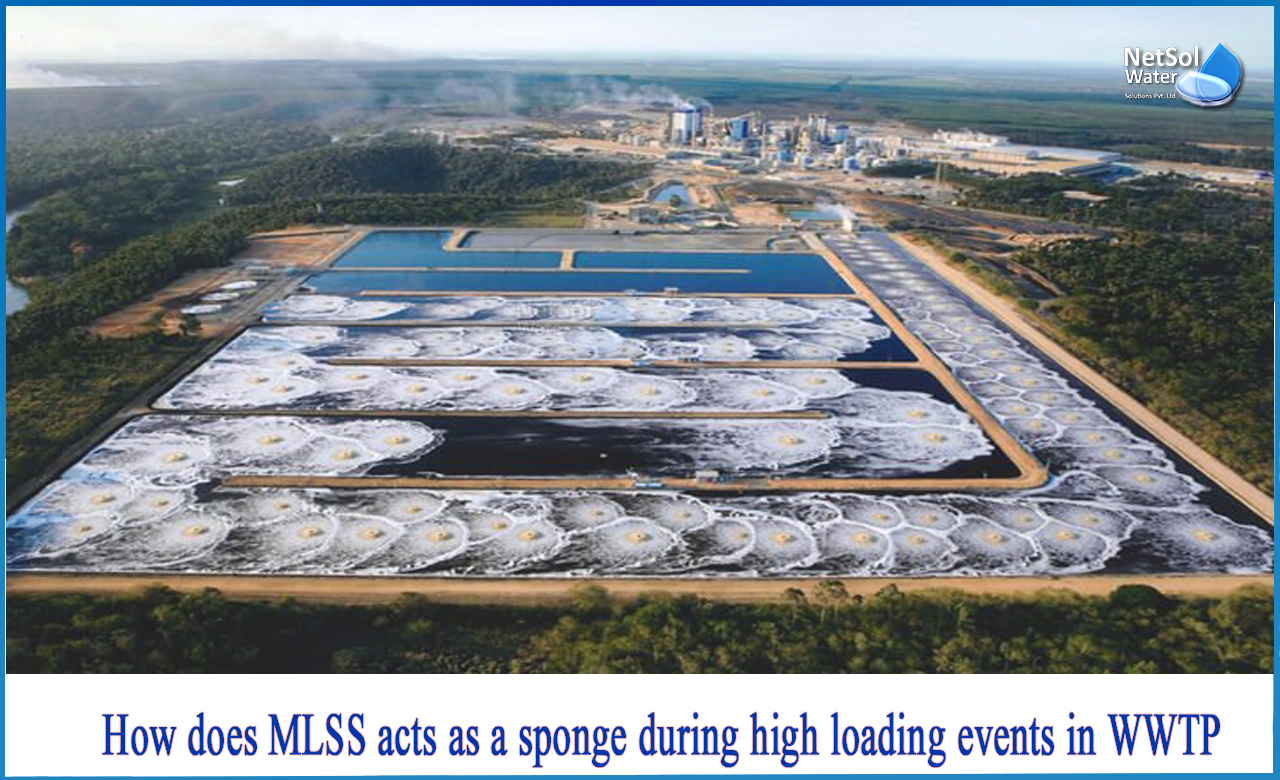What is MLSS?
The concentration of suspended particles in an aeration tank during the activated sludge process, which happens during waste water treatment, is known as mixed liquid suspended solids (MLSS). It is often measured in milligrams per litre (mg/L).
Within an aeration tank, mixed liquor is a mixture of raw or unsettled wastewater or pre-settled wastewater and activated sludge. The majority of MLSS is made up of microbes and non-biodegradable suspended materials. It is a crucial aspect of the activated sludge process because it ensures that there is always enough active biomass available to absorb the applied amount of organic pollutant.This is referred to as the food to microbe ratio, abbreviated as the F/M ratio.
Balancing F/M Ratio
By keeping this ratio at an acceptable level, the biomass will eat a large proportion of the food. This reduces residual food loss in the treated effluent. Simply put, the more the biomass consumption, the lower the biochemical oxygen demand (BOD) in the discharge. It is critical that MLSS eliminates COD and BOD from water in order to cleanse it for clean surface waters, clean drinking water, and hygiene. Raw sewage contains up to several hundred mg/L of BOD when it enters the water treatment process.After treatment using screening, pre-settling, activated sludge processes, or other methods, the concentration of BOD in water can be reduced to less than 2 mg/L, which is considered clean and acceptable for release to surface waters or reuse.
How does MLSS acts as a sponge during high loading events in WWTP?
Influent organics might be in the form of surges (temporary high strength waste), particulates (insoluble), or inorganic/non-biodegradable chemicals. In these instances, the MLSS and its associated surface area will draw these chemicals to the surface. This causes the chemicals to migrate from the aqueous phase into the floc.This is referred to as adsorption.
Exo-enzymes and bio-surfactants are used by bacteria after they connect to the floc surface to convert insoluble chemicals into soluble versions that can pass the cell wall. Inorganics and non-biodegradable components are retained in the floc and gradually waste away. The MLSS does not have an infinite ability to absorb high-concentration influent. Adsorption capacity limitations are typically shown as excessive TSS, deflocculation, loss of nitrification, and difficulties sustaining D.O.
In MLSS, bacteria first consume soluble organics, which include sugars, alcohols, and short-chain fatty acids, all of which easily pass the cell wall and supply nourishment for the bacteria.This is why an influent containing organic acids, sugars, or highly soluble organics causes a rapid reduction in D.O. Larger chemicals that cannot easily penetrate the cell wall remain in these layers until exoenzymes and other biochemical processes allow them to do so. Absorption necessitates time and circumstances that allow microorganisms to create energy from chemical metabolism.
If you want to know more about how does MLSS act as a sponge in wastewater treatment plants, you can have an expert solution upon contacting Netsol Water, a leading manufacturer of Industrial and Commercial water treatment plants and wastewater treatment plants, among other services. Our treatment systems are very effective at removing all types of chemical, physical, and biological pollutants.
Call us on +91 9650608473 or contact via email at enquiry@netsolwater.com for more information.



